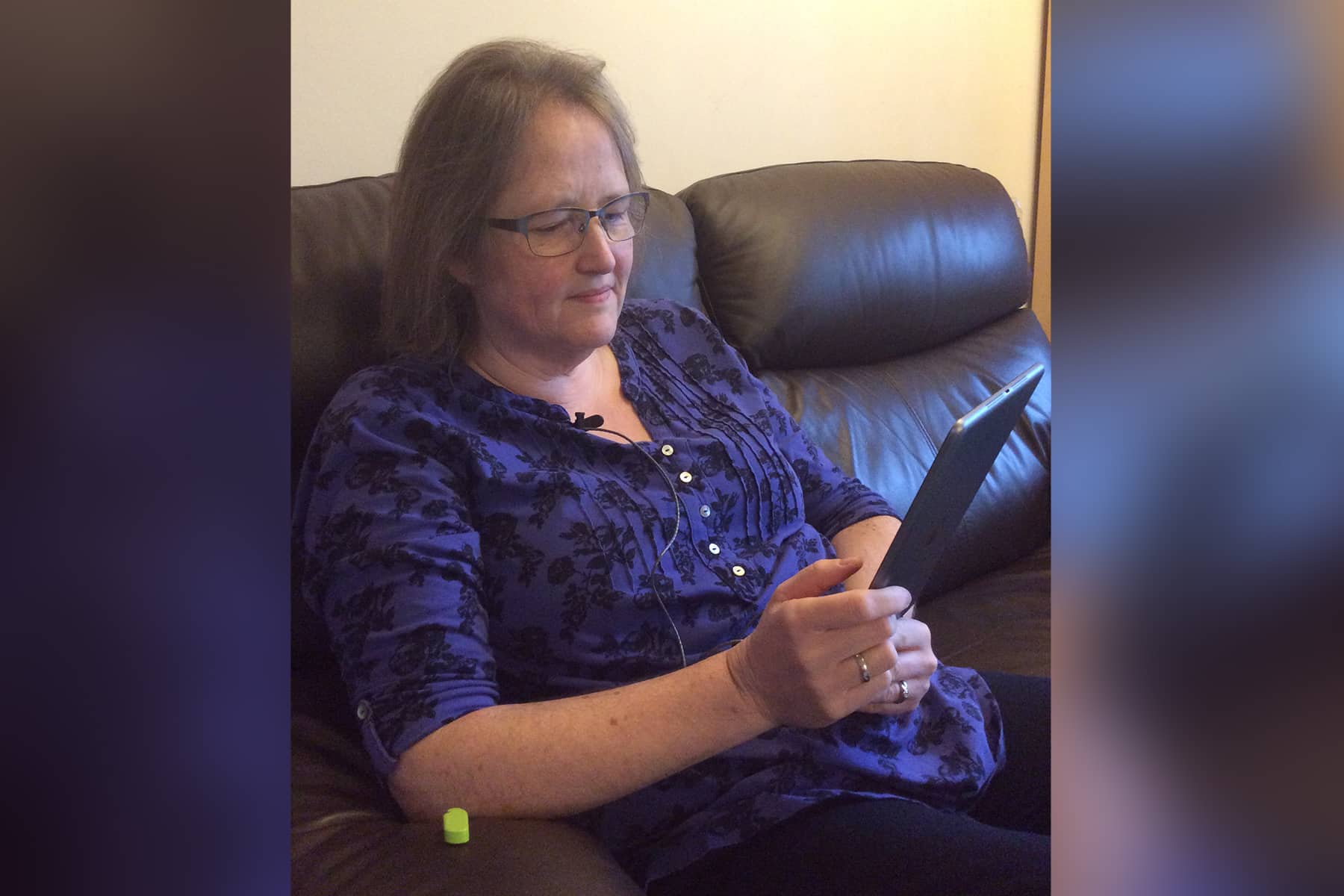
MED-EL
Published Mar 04, 2016
5 Rehabilitation Tips for Single-Sided Deafness
Gemma Mole is a hearing therapist and MED-EL cochlear implant recipient who got to treat her single-sided deafness. Earlier, we shared her story of her receiving a cochlear implant; here she dips into her therapist’s bag of tricks with some rehabilitation tips for those with single-sided deafness.

Rehabilitation for Single-Sided Deafness
Using audio books and computer-based audio programmes are a great way for an adult or an older child with Single-Sided Deafness to rehabilitate.
When you have single-sided deafness, the aim of rehabilitation is to work directly with the implanted ear and not your “good ear”. If you are able to get an ear plug made for your good ear, then do this, as this will help to block the sound from reaching your brain through the good ear—it will, given the chance. But, once you have spent some time working with your newly implanted ear on its own, try this activity again without blocking up your “good ear”.
Then, since many programs or apps that you’ll use for these activities will be on a phone or computer, you can send the sound directly to your audio processor using either a Direct Audio Input cable, or through a neckloop.
The Different Activities
There are different online auditory training programmes out there, and here are some other listening exercises that I found out about and enjoyed working through.
Listening work can get tedious, but repetition is good. If we think back to how we learned as a child, much of it was through natural repetition. I have found that having a variety of things to listen to is more motivating and makes the practice much more manageable.
I hope you find some of these suggestions helpful. Think of this practice as a second childhood for your hearing system!
Audiobooks
I found children’s books the easiest way to start as the speech tends to be slower, the language simpler, and you can anticipate what may come up next. Then you can eventually move onto teen and adult books.
Many libraries will have audiobooks so it doesn’t need to be expensive, and if you have children or grandchildren see what they have before going out to buy anything. Ideally you’ll have both a printed copy of the book as well as the audiobook version.
You can use audio books in different ways:
- Listen to the audiobook and read the book
- Listen to the audiobook a little at a time, and if you have the book look at it when you need a little backup
- Listen to the audiobook without reading anything at all.
Speech may sound garbled or difficult to understand completely at first. Following the text in the early stages will help to make it clearer and help you along.
Angelsound by Tiger Speech
This is a good listening programme that covers speech sounds, words, sentences in quiet and noise, environmental sounds and music. It’s available in a free downloadable PC version or a free mini iOS app called iangelsound.
The PC version has several modules, each with many levels of difficulty, so by following along there’s lots to practice. I still like to do something on this every day.
Hear Coach
The Hear Coach app is a free downloadable app, like the Listening Master app. It has three different listening exercises which present you with different words and numbers. Each exercise increasingly gets harder.
TED Talks
TED Talks are lectures that cover a wide range of topics for all different interests. They last from 5—18 minutes and come with optional closed captions. There are various ways of using these talks:
- Watch the video, which often concentrates on the speaker’s face so you can make use of lipreading.
- You can also use subtitles, and if you want there is also a transcript which underlines the words being spoken—what a choice!
- As time goes on you can reduce the amount of extra information you need, like subtitles, until you can just listen and understand.
I would recommend starting with shorter talks, and note that not all of the speakers have clear speech and some talk really fast. If you really struggle don’t get caught up on it, just move on to a talk where you can understand and achieve something, and go back to the more challenging talks at a later stage.
A Final Note
Just a reminder before I finish: not everyone will be able to follow speech by sound alone. You may need to make use of whatever information you can get a hold of, such as lipreading, looking at body language, etc., along with the sounds you receive from your cochlear implant.
Enjoy your listening practice!
References

MED-EL
Was this article helpful?
Thanks for your feedback.
Sign up for newsletter below for more.
Thanks for your feedback.
Please leave your message below.
Thanks for your message. We will reply as soon as possible.
Send us a message
Field is required
John Doe
Field is required
name@mail.com
Field is required
What do you think?
© MED-EL Medical Electronics. All rights reserved. The content on this website is for general informational purposes only and should not be taken as medical advice. Contact your doctor or hearing specialist to learn what type of hearing solution suits your specific needs. Not all products, features, or indications are approved in all countries.

MED-EL

MED-EL


